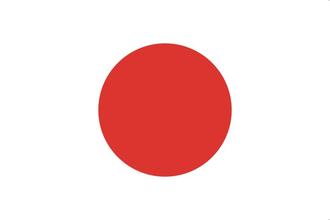Japan

Japan, full name of Japan is located in eastern Asia and northwest part of the Pacific. Its name means "sunrise country", and the territory is composed of four big islands of Hokkaido, Honshu, Shikoku and Kyushu as well as more than 7200 islands, and it has a total area of 378,000 square kilometers. The main nationality is Dahe and Japanese is the commonly-used language. It has a total population of about 126,000,000.
In the middle of the 3rd century AD, there emerged a larger country "Yamato". In 645 AD, Japan learned from the Tang Dynasty in China to carry out Taika Reform. In the late 12th century, the imperial power sidelined and Japan went into the shogunate era.
In the mid-1850s, the invasion of Europe and the United States forced the Japanese to abandon the "lock country policy", signed a series of unequal treaties, and the Japanese people began to fight against aggression and the shogunate rule. In 1868, Meiji emperor regained power and encouraged to learn from Europe and the United States by carrying out Meiji Restoration. As a result, Japan quickly ranked among the capitalist powers, and gradually embarked on the militarist road of aggression and expansion, and repeatedly invaded China, North Korea and other Asian countries. After the Japanese surrendered in World War II, the United States sent troops to occupy Japan. In 1947, Japan promulgated a new constitution and it changed from the emperor system to the parliamentary cabinet system with the emperor as a national symbol. After the war Japan pursued the route of "pay more attention to economy and pay less attention to arms", and in the late 1960s Japan became the Far East's largest economic power. Currently Japan is the third largest economy in the world, second only to the United States and China.
Japan is a highly-developed capitalist country. Its resources are scarce and it is extremely dependent on imports, with the developed manufacturing industry being the pillar of the national economy. Scientific research, manufacturing and education ranks high in the world. In addition, its cultural industry and developed tourism led by animation and game industry are also an important symbol. Japan is a model of environmental protection in terms of resource utilization and many other aspects, and its nationals generally have a good education, a higher standard of living and national quality. Up to now it still preserves the traditional Japanese culture represented by tea ceremony, flower arrangement, fragrance and books.







